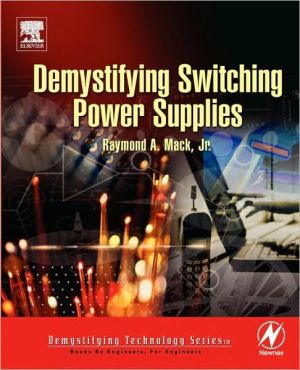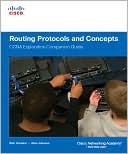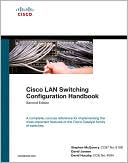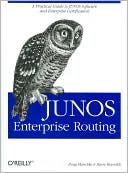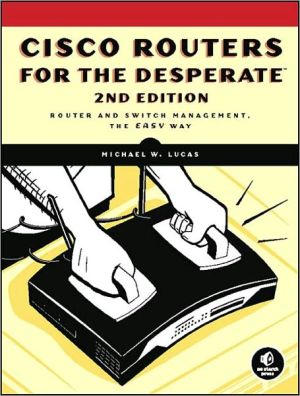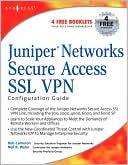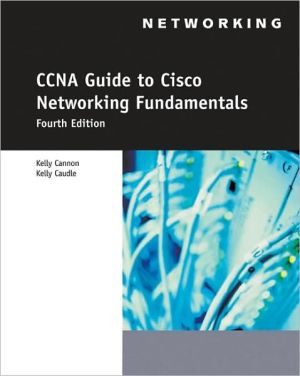Demystifying Switching Power Supplies
This book is a crash course in the fundamental theory, concepts, and terminology of switching power supplies. It is designed to quickly prepare engineers to make key decisions about power supplies for their projects.\ Intended for readers who need to quickly understand the key points of switching power supplies, this book covers the 20% of the topic that engineers use, 80% of the time.\ Unlike existing switching power supply books that deal strictly with design issues, this book also...
Search in google:
This book is a crash course in the fundamental theory, concepts, and terminology of switching power supplies. It is designed to quickly prepare engineers to make key decisions about power supplies for their projects.Intended for readers who need to quickly understand the key points of switching power supplies, this book covers the 20% of the topic that engineers use, 80% of the time. Unlike existing switching power supply books that deal strictly with design issues, this book also recognizes the growing importance of "off-the-shelf" commercial switching power supplies, giving readers the background necessary to select the right commercial supply. This book covers the core essentials of power supply theory and design while keeping mathematics to the absolute minimum necessary. Special attention is given to the selection of appropriate components, such as inductors and transformers, to ensure safe and reliable operation. Engineers, whose main design responsibilities are in other areas, will better understand the strengths and weaknesses of switching power supplies and whether such supplies are appropriate for their projects. They will be able to give more meaningful design requirements and specifications to those who design switching power supplies.* Discusses both AC line supplies and DC-DC inverters.* Covers the main switching power supply designs, including flyback, forward conversion, bridge, buch, boost, and boost/buck topologies.* Design examples include a 220 volt offline switching power supply and a 110 volt uninterruptible supply.
PrefaceixIntroductionxiChapter 1Basic Switching Circuits1Energy Storage Basics3Buck Converter4Boost Converter6Inverting Boost Converter9Buck-Boost Converter10Transformer Isolated Converters11Synchronous Rectification16Charge Pumps17Chapter 2Control Circuits21Basic Control Circuits23The Error Amplifier26Error Amplifier Compensation28A Representative Voltage Mode PWM Controller33Current Mode Control39A Representative Current Mode PWM Controller41Charge Pump Circuits45Multiple Phase PWM Controllers49Resonant Mode Controllers50Chapter 3The Input Power Supply51Off-Line Operation53Radio Interference Suppression55Safety Agency Issues57Power Factor Correction60In-Rush Current64Hold-Up Time66Input Rectifier Considerations69Input Reservoir Capacitor Characteristics70Chapter 4Non-Isolated Circuits73General Design Method75Buck Converter Designs76Boost Converter Designs86Inverting Designs94Step Up/Step Down (Buck/Boost) Designs97Charge Pump Designs102Layout Considerations107Chapter 5Transformer-Isolated Circuits111Feedback Mechanisms113Flyback Circuits121Practical Flyback Circuit Design129Off-Line Flyback Example129Non-Isolated Flyback Example137Forward Converter Circuits141Practical Forward Converter Design143Off-Line Forward Converter Example144Non-Isolated Forward Converter Example148Push-Pull Circuits152Practical Push-Pull Circuit Design154Half Bridge Circuits158Practical Half Bridge Circuit Design161Full Bridge Circuits164Chapter 6Passive Component Selection167Capacitor Characteristics169Aluminum Electrolytic Capacitors171Solid Tantalum and Niobium Capacitors173Solid Polymer Electrolytic Capacitors175Multilayer Ceramic Capacitors176Film Capacitors180Resistor Characteristics181Carbon Composition Resistors183Film Resistors183Wire Resistors184Chapter 7Semiconductor Selection187Diode Characteristics189Junction Diodes189Schottky Diodes194Passivation197Bipolar Transistors197Power MOSFETs204Gate Drive208Safe Operating Area and Avalanche Rating219Synchronous Rectification222Sense FETs229Package Options229IGBT Devices230Chapter 8Inductor Selection235Properties of Real Inductors237Core Properties240Designing a Powder Toroid Choke Core250Choosing a Boost Converter Core256Chatper 9Transformer Selection261Transformer Properties263Safety Concerns266Practical Construction Considerations267Choosing a Forward Converter Transformer Core271Practical Flyback Core Considerations272Choosing a Flyback Converter "Transformer" Core273Chapter 10A "True Sine Wave" Inverter Design Example277Design Requirements279Design Description280Preregulator Detailed Design286Output Converter Detailed Design290H Bridge Detailed Design293Bridge Drive Detailed Design296Chapter 11A PC Off-Line Supply299Setting Requirements301The Input Supply302DC-DC Converter305Diode Selection309Inductor Designs310Capacitor Designs314Transformer Design315Index319
\ From the Publisher“Mack takes you from the basics on through the details of passive component selection and semiconductor selection. Of particular note are his treatment of control circuits and their effect on ripple levels and electromagnetic compatibility.”\ — Rick Nelson, Chief Editor, Test & Measurement World, August 2006\ \
